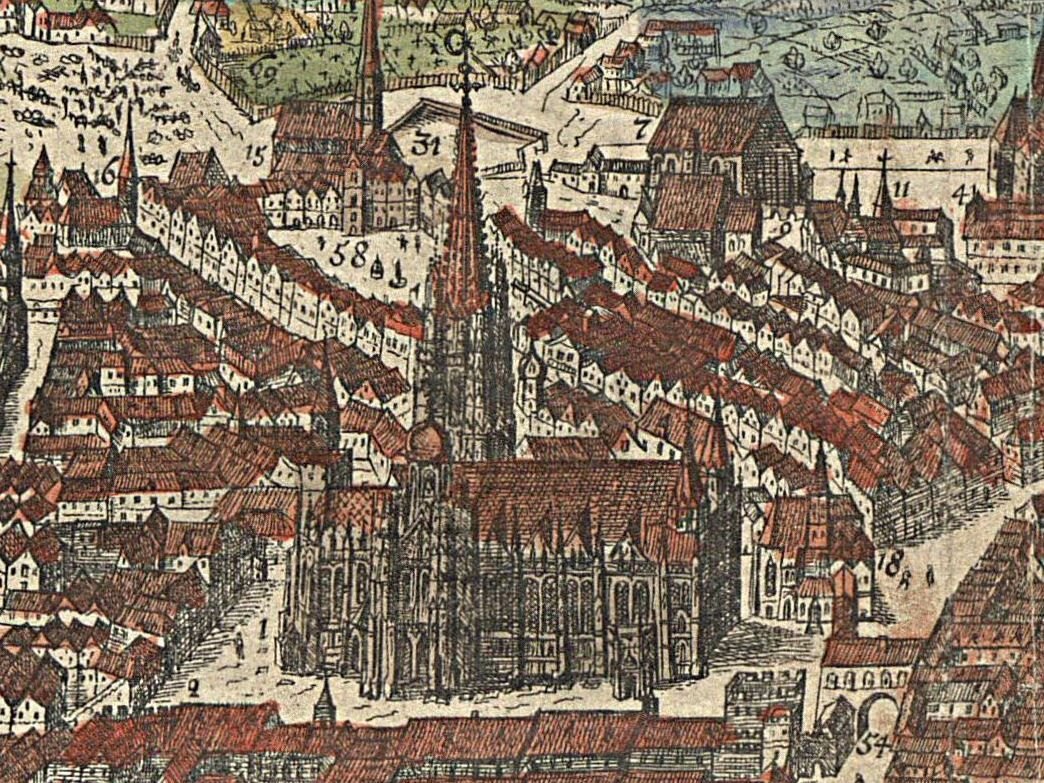E. Music in the City
The city as a commercial and cultural community offered the key conditions for both the daily practices of music and its long-term development in Austrian regions. Walter Salmen’s concept of the urban ‘sonic aura’ focuses on the simultaneity, but also the diversity of the listening and musical activities of multifarious city dwellers. Their daily routines were enlivened and directed by church clocks, bells, horns, trumpet calls and city criers. The city authorities, the courtly and noble participants in musical life and the corporations - guilds, confraternities, schools, hospitals - deployed professional musicians for the purposes of representation, for example at official receptions, stately visits, general festivals such as Fastnacht or the Viennese Scarlet Horse Race. The services of the trumpeters and tower watchmen, town waites, organists, lutenists and instrument-makers were indispensable. Musicians lived in the city, even if they served a nobleman or a church, were freelancers or had to go on travels and military campaigns. The music of liturgical services and processions, not only at St Stephen’s cathedral in Vienna but also at other churches in Vienna and other cities in the region, can be inferred from numerous documents. Surviving musical sources of Viennese sacred music provide a panorama of significant stylistic diversity. Knowledge of music theory accumulated in the libraries of educated members of the university who also occasionally possessed notated music manuscripts. Musical personalities, including Humanists, were active at or in the vicinity of the University of Vienna and from there transmitted musical knowledge to other places in the region. The Corpus Christi festival was a focal point of musical practice: archival research illuminates the organisation of the feast by a confraternity and the unfolding of the most important procession. As part of the trading city of Bozen/Bolzano, a public music culture developed particularly in the orbit of the church, with bourgeois individual initiatives and innovation playing a dynamic role.
Stadtansicht Wiens mit St. Stephan und anderen Kirchen (kolorierter Stich, Jacob Hoefnagel, 1609). © Wien Museum (www.wienmuseum.at), Inv. Nr. 31043. Die Bedeutung von Dom, Klöstern und Pfarrkirchen als Koordinationspunkten des Lebens wurde durch Glockenklang und Prozessionen versinnlicht.
City panorama of Vienna with St. Stephan and other churches. Coloured engraving by Jacob Hoefnagel, 1609. © Wien Museum (www.wienmuseum.at), Inv. Nr. 31043. The importance of cathedral, monasteries and parish churches as coordination points of civic life was communicated to the senses through bellringing and processions.
Abb. Stadtansicht Wien Hoefnagel
The texts marked with * are not yet available online.
- Die Klang-Aura der Stadt
- Städtisches Musikleben
- Musiker in der Stadt
- Musik im Gottesdienst: Wien
- Überlieferung der Wiener Kirchenmusik des 15. Jahrhunderts
- Universität und Musik. Musikbücher im universitären Umfeld
- Universität und Musik. Persönlichkeiten*
- Die Wiener Gotsleichbruderschaft
- Bozen/Bolzano: Musik im Umkreis der Kirche
- Musik für die Familie Fugger in Augsburg*
